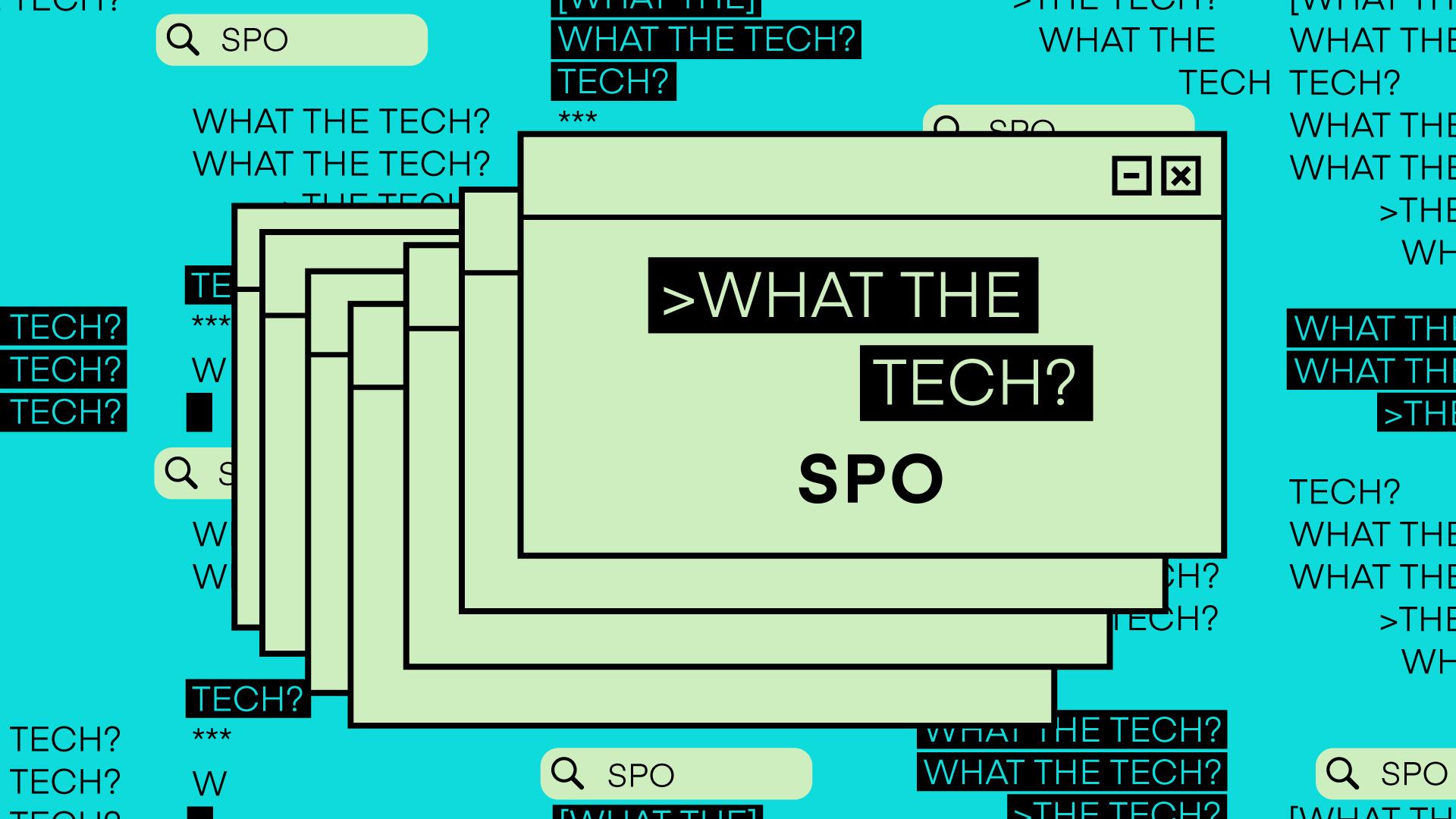What the Tech is SPO?
How SPO aims to make ad tech’s supply chain simpler, more efficient, and more transparent.

What is SPO?
When it comes to programmatic advertising, it’s important to think about the supply chain. On one end, there are the buyers, who use demand-side platforms (DSPs) to buy media. On the other end of the spectrum are publishers, who use sell-side platforms (SSPs) to sell their ad inventory. Between these two parties are various companies, all of which provide different services to both buyers and sellers. Supply path optimization (SPO) is all about ensuring that the cost and value of those services are as transparent as possible to buyers and sellers.
As more advertisers embrace programmatic, there’s a significant industry progress toward optimizing the supply chain. And in many cases it’s an industry effort that aims to clean up the supply chain and make it more efficient, competitive, and transparent by working to ensure that everyone who plays a role in serving an ad impression is adding more value than they are extracting.
I want more details.
Think of it this way. In traditional analog advertising, a brand might go to a major daily newspaper and buy a full page ad, with their agency charging a 15 precent media fee. In that scenario, the brand has little understanding of who saw their ad and how they responded.
With programmatic advertising, brands can be a great deal more precise. They can understand who they are reaching with much more accuracy, they can manage frequency more intelligently, and they can better understand campaign performance. In this case, the value of those ads increases compared to their analog counterparts. But there are various components of the supply chain that are contributing to that precision. And ad buyers, as well as publishers, want to have transparency into those costs, and the precise value provided, even with the added complexity of programmatic.
Subscribe to The Current
Subscribe to The Current
But how does this tie into OpenPath?
OpenPath is a new product from The Trade Desk designed to provide advertisers with direct access to premium digital advertising inventory. Initial publisher partners to join OpenPath include Reuters, The Washington Post, Gannett | USA Today Network, Conde Nast, McClatchy, Hearst Magazines, Hearst Newspapers, Advance Local, MediaNews Group, Tribune Publishing, Nexstar Digital and CafeMedia, among others.
OpenPath enables publishers to integrate directly with The Trade Desk. In doing so, advertisers can gain direct access to advertising impressions created by those publishers, and publishers are better positioned to maximize revenue from those impressions. In this way, OpenPath aims to remove the inefficiencies often present in the programmatic supply chain for digital advertising, including opaque and harmful privileges of the walled gardens.
This is not The Trade Desk’s first foray into SPO however. Indeed, the company has long championed supply chain transparency and led industry efforts to drive positive progress for its advertising clients.
These include partnering with HUMAN to block fraudulent, biddable impressions; launching gold standard guidelines to help standardize pricing, billing and data practices industrywide; the adoption of sellers.json and SupplyChain initiatives to improve supply chain transparency and Ads.txt and App-ads.txt to block unauthorized traffic; and integrating pre-bid solutions from a range of partners to help with brand safety.
Why am I hearing about Google Open Bidding when people talk about OpenPath?
OpenPath aims to level the playing field for advertisers and provide transparent and objective access to the very best digital advertising inventory, In this way, OpenPath is an excellent example of industry leaders working together to advance an open market with the goal of providing transparent price competition and maximizing value for both advertisers and publishers. With that in mind, as OpenPath launched, The Trade Desk turned off Google Open Bidding on its platform.